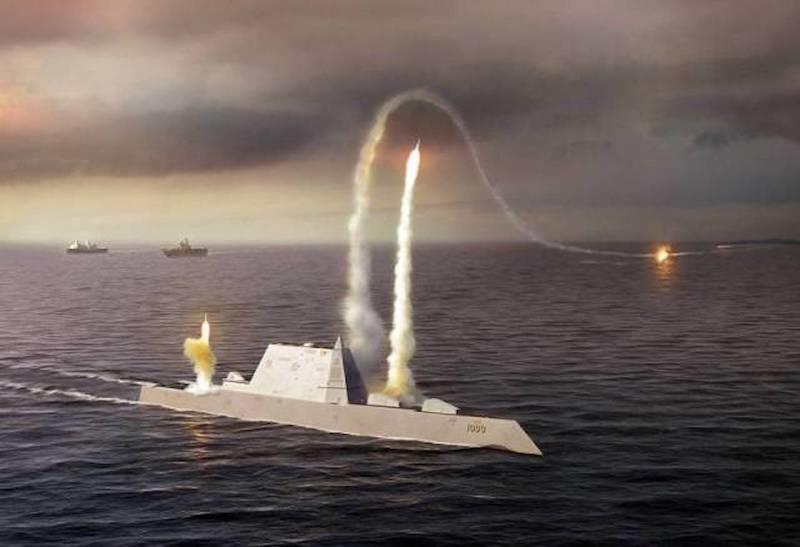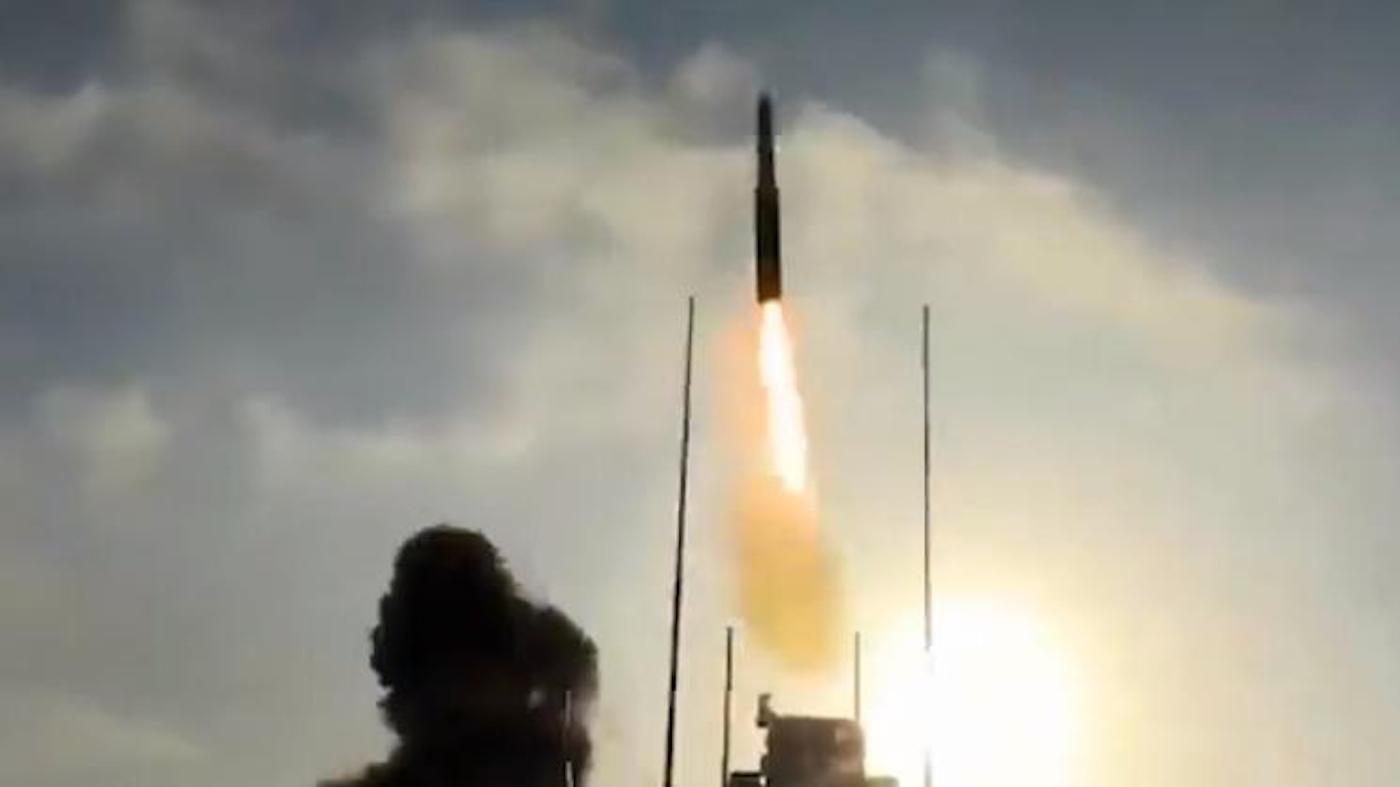(MENAFN- Asia Times) The US plans to test a hypersonic weapon from a Zumwalt-class destroyer in 2025, a move that likely aims to plug a growing deterrence gap vis-à-vis China in the Pacific.
this month, naval news reported that the US Navy will conduct a test launch of a hypersonic weapon from the USS Zumwalt in December 2025, with intensive preparations underway to address any potential technical issues before the launch.
The report notes that the US is integrating an underwater weapons control system with Tactical Support Center (TSC) control to facilitate data and message transfer to launch the missile.
It also mentions that the US is scheduled to do virtual tests of both control systems by simulating an Integrated Combat System (ICS) in a laboratory next month. That will be followed by an onboard ship demo both in port and underway.
The ICS tests, Naval News notes, will inform the US Navy how to field and integrate hypersonic weapons aboard the Zumwalt class by 2025 and on Virginia-class nuclear attack submarines by 2028.
last march, asia times reported on the rationale behind repurposing the Zumwalt class from a stealthy shore bombardment platform to a hypersonic missile-armed surface combatant. The Zumwalt class features advanced technologies such as stealth shaping, electric propulsion and advanced radars and processing capabilities, all key for its new role.
However, this decision may also stem from a section of the Navy's desire to save a problematic design. Critics note the Zumwalt-class tumblehome hull could become unstable in rough seas and can be readily detected using low-frequency radar.

Concept art of a Zumwalt-class destroyer firing missiles. Image: topwar.ru
The class foregoes close-in weapons systems (CIWS) to preserve its stealthy hull shape, potentially making it vulnerable to anti-ship missiles. Moreover, the high cost per ship at US$4.24 billion per hull ($7.5 billion including R&D costs) means only three have so far been built, with the navy likely requiring more to meet China's rising challenge.
Given that, it may be more feasible for the US to design a new surface combatant built around hypersonic weapons rather than endure increasing sunk costs with the Zumwalt class. asia times reported this january on the US DDG (X), an upcoming large surface combatant designed to replace the Ticonderoga-class cruisers and older Arleigh Burke-class destroyers, and supplant the Zumwalt-class.
The DDG (X) reuses technologies from the Zumwalt class, notably its integrated electric propulsion (IEP) system, which reduces detectable noise and vibration, increases time on station and provides more power to weapons systems.
The class is also envisioned to have enlarged variants of the AN/SPY-6 active electronically scanned array (AESA) radar mounted on Flight III Arleigh Burke-class destroyers and is designed to accommodate future upgrades such as directed energy weapons. It is planned to have a 32-block cell of the Mk 41 Vertical Launch System (VLS) or a larger 12-cell VLS for hypersonic missiles.
this month, naval technology reported that the US Department of Defense (DOD) awarded naval architecture firm Gibbs & Cox a US$39.6 million contract to support emerging ship concepts, including the DDG (X). The report notes that the contract could mean that Gibbs & Cox will be the primary company responsible for the DDG's (X) main design, working alongside the US Navy to put the ship in service by the 2030s.
The DDG (X) design aims for“a greater missile capacity than previous destroyers with room for future larger and hypersonic missiles, a range increase of 50% and engine efficiency 25%, being able to launch initial ships with room to upgrade to the 'next generation' of radar, sensors, and communications, and improvements to survivability by reducing noise and radar signatures by roughly 50%,” said GlobalData defense analyst James Marques, as reported by the source.
China and Russia's increasing deployments of hypersonic missile-armed large surface combatants are pressuring the US to respond.
this month, asia times reported on the export version of China's YJ-21 hypersonic anti-ship missile, whose domestic version was first observed last April during a test launch from a Type 055 cruiser. The People's Liberation Army-Strategic Support Force (PLA-SSF) touts that the YJ-21 can travel at Mach 10, or 34,000 meters per second, and that no existing ship defenses can shoot it down.
The PLA-SSF also emphasized that even without an explosion, the tremendous kinetic energy of the YJ-21's impact will have devastating effects on its target. It also claims that the YJ-21 marks a significant evolution in China's anti-access/area-denial (A2/AD) capabilities, capitalizing on the operational flexibility and survivability of a sea-based launch platform such as the Type 055 cruiser.

A YJ-21 hypersonic missile. China claims the US lacks an answer to the weapon. Image: Facebook
At the same time, newsweek reported this month that warships assigned to Russia's Northern Fleet have gone to sea with tactical nuclear weapons, citing the Norwegian Intelligence Service saying that this may mark the first time in 30 years that the fleet has done so.
Moreover, the source notes that while the Soviet Union's Northern Fleet warships frequently go to sea with nuclear weapons aboard, this marks the first time Russia has deployed nuclear weapons aboard its surface ships.
In contrast, the US' lack of similarly-armed large surface combatants may put it at a disadvantage vis-à-vis near-peer competitors China and Russia.
last october, asia times noted that the US Navy's lack of a ship-based nuclear deterrent has potentially opened a deterrence gap with China and Russia following the Obama administration's decision to end the deployment of nuclear weapons aboard US surface ships.
Placing strategic nuclear weapons on surface ships entails unnecessary risk and vulnerability, making submarines the best option for a sea-based strategic nuclear deterrent. However, forward-deploying tactical nuclear weapons for offensive battlefield roles is a hotly-debated issue among US strategists.
US Strategic Command Admiral Chas Richard argues that ship-based cruise missiles with tactical nuclear warheads are necessary to counter China and Russia's growing tactical nuclear weapon arsenal.
However, US Chief of Naval Operations Admiral Mike Gilday has criticized the idea, saying arming US surface ships with tactical nuclear weapons would detract from other missions, contribute to fleet overstretch and that conventionally-armed hypersonic missiles are a feasible alternative for ship-based deterrence.